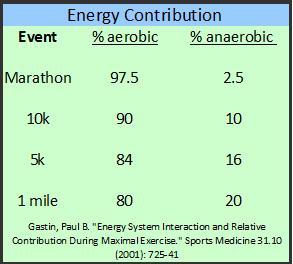Hey, look, a running science lesson!
This is a blog post created from a coaching dialogue between Coach Erin and a Love Training More athlete on the subject of proper pacing for threshold and vo2max (also called 5km pace) workouts.
I am sharing this because it’s often valuable to take a step back from our training to think and understand why we are doing what we are doing. This is my best attempt at a simple explanation of a complex topic. I’m not an exercise physiologist. I’m coming at this as a well-read coach with a professional background as Registered Nurse. I don’t have time to prepare a scholarly paper on this. So this is what you’ll get!

This month, my athlete Jody asked me why I told her not to run too fast during a threshold interval but told her it was ok to run a little faster during two x 4 minute vo2max paced intervals.
The workout was this: 1km at vo2max/5km pace. 4 minute rest (full rest). 15 minutes threshold pace. 3 minutes active rest. 1km at Vo2max/5km pace.
Here is the long answer. Sometimes I get a little bit carried away when answering athlete questions. At least it provides blog post content! Some of this content is borrowed from reputable sites, I didn’t write the book on this.
Science Lesson:
To exercise, your body needs to break down sugar and convert it to glycogen so it can be used as energy or fuel.
Aerobic exercise: In the presence of adequate oxygen, the body uses the aerobic system, also known as aerobic glycolysis, to power continuous running. This is aerobic exercise.
When you are “running aerobically” (or running easy), your muscles have enough oxygen to produce all of the energy they need to perform. Lactate is produced during this process. Lactate is the byproduct of glucose utilization by muscle cells. It is produced at a “manageable level” and your body deals with it efficiently. In fancy words, this is called “lactate clearance capacity.” This can be trained. More in a moment.
Anaerobic exercise is an exercise effort that is highly intense. During high intensity exercise, your body will recruit Type II-Fast Twitch muscle fibers. These Type II muscle fibers are highly glycolytic. In other words, they are greedy; they use lots of glucose. Because of this, during intense exercise, the lactate production is many times higher than that of resting levels or during aerobic exercise. When lactate production shoots up like this, there is a release of hydrogen ions (H+). This release of H+ can cause an important reduction of contractile muscle pH resulting in acidosis. Are you still with me?
 So in this intense exercise state, there is lots of lactate and H+ and there is no longer enough oxygen to feed your muscles energy through the aerobic oxygen-fuelled pathway so your muscles begin to also create energy without oxygen (thus an-aerobic). It’s not a one or the other. At the point that the exercise effort becomes this intense, the anaerobic system joins in with the aerobic system and energy is produced from both. The continued intensity of the exercise will dictate the ratio of aerobic vs anaerobic.
So in this intense exercise state, there is lots of lactate and H+ and there is no longer enough oxygen to feed your muscles energy through the aerobic oxygen-fuelled pathway so your muscles begin to also create energy without oxygen (thus an-aerobic). It’s not a one or the other. At the point that the exercise effort becomes this intense, the anaerobic system joins in with the aerobic system and energy is produced from both. The continued intensity of the exercise will dictate the ratio of aerobic vs anaerobic.
Aerobic Threshold Pace:
Your aerobic threshold pace effort is 83-85% of your maximum effort. Some people call it the pace that you could hold for an hour. The purpose of training at this intensity is to raise lactate threshold, the exercise intensity at which the blood concentration of lactate and/or lactic acid begins to exponentially increase (which makes you feel badly and slow down). You are running at an intensity that is allowing your body to clear the lactate so that it can carry on with it’s aerobic glycolysis (using oxygen to produce energy).
In normal person terms, this pace is most effective at improving your body’s endurance: ability to run longer and at a faster pace. The aerobic system is what we are training here.
If you are running faster than this intensity or faster than 83-85% of your maximum effort, you are no longer training this system. Lactate begins to accumulate in the blood at a faster rate than it can be removed. This is problematic because as a result, unbuffered acid (remember talk of H+) is added to the blood, a condition that makes you feel bad and it will no longer be possible to maintain that given exercise intensity. You will slow down. Your anaerobic system will kick in for energy production. You are beginning to stress and train the vo2max capacity and/or the anaerobic system but aren’t doing it in an efficient manner because the interval is too long. Your workout has now lost it’s intended purpose.
So in Jody’s training instructions 2 weeks ago, when she would be joining a slightly faster Love Training More teammate, I wrote:
“please run the 15 min at threshold pace at your own pace of 5:16/km so that it achieves the intended training benefit of boosting aerobic threshold (running longer at a faster pace).”
I wanted Jody to be working on the aerobic threshold system. If she had happened to run too fast, her muscles cells would have flooded with too much lactic acid/lactate and she would not have gotten the intended training benefit of raising the lactate threshold.
Next lesson: vo2max or 5km pace training, aka “killer kms.”
Vo2max or 5km pace running is a high intensity zone that we train in that boosts speed and improves running form, turnover etc. On Team Love Training More, we “affectionately” call these “killer kms,” so coined by Morgan Book.
As I detailed, our working muscles almost always get their energy from both aerobic and anaerobic systems simultaneously, with the balance shifting gradually from aerobic toward anaerobic as exercise intensity increases.
Our VO2 max (aka maximal aerobic capacity) is the highest rate at which our body can transport oxygen to our muscles. Our muscles can then use this oxygen to produce energy aerobically.
Improvements in VO2 max occur due to increases in the amount of blood your heart can pump with each contraction (your heart’s stroke volume) and a variety of adaptations in your muscles such as increases in the size and number of mitochondria in your muscle fibers, and increased capillarization.
The strongest stimulus to increase VO2 max appears to be provided by interval workouts that accumulate as much time at 95 to 100 percent of current VO2 max as possible.These intervals are short: of 600m to 1600m duration (or 2 to 6 minues) and with 1:1 or 2:1 rest.
If you run faster than vo2max effort/pace, you tip more into the anaerobic system. Depending on your coach’s goal for the workout, this might be ok here as long as you can maintain the full workout as prescribed. The runner might gain benefit, namely increasing the speed and power characteristics of the muscle fibers. If the coach’s goal is purely to increase vo2max and the workout is, for example, 5 x 1km with 4 minutes rest and the runner blows through the first one so fast that the remaining 4 intervals are way too slow because the athlete is now toast, then that’s not ok.
So I told Jody this month, in a workout that featured 1 killer km, 4 minutes rest. 15 minutes at threshold pace, 3 minutes rest, 1 killer km:

When it comes time for the “killer kms”, these you can try to hang with Allana for them if you wish. Or you can keep your own pace. There’s room to run a little faster here and still achieve an intended training benefit (which would be anaerobic system speed: teaching muscles to burn fuel without using oxygen, teaching muscles to fire properly while fatigued and stressed).
If Jody had exceeded her Vo2max, she would have moved into an anaerobic zone for a short period of time and that would have been ok. They were 2 stand alone intervals with complete rest. It’s also difficult to accurately predict true vo2max outside of a lab and outside of recent race results produced under perfect conditions. The human brain has difficulty allowing 100% effort. As a coach, I could be assured that my athlete would not blow a gasket during a one km interval followed by full rest.
These are good science-filled articles to help with further exploration of this.
https://runnersconnect.net/aerobic-training-run-faster-by-running-easy/
https://www.runnersworld.com/race-training/interval-sessions-increasing-your-v02-max
http://running.competitor.com/2015/11/training/anaerobic-training-for-runners_7409
https://www.trainingpeaks.com/blog/what-is-lactate-and-lactate-threshold/
Lesson concluded. Running science school is dismissed.
Don’t agree with me? By all means, chime in using the comments!


One Response
I see the greatest contents on your blog and I extremely love reading them